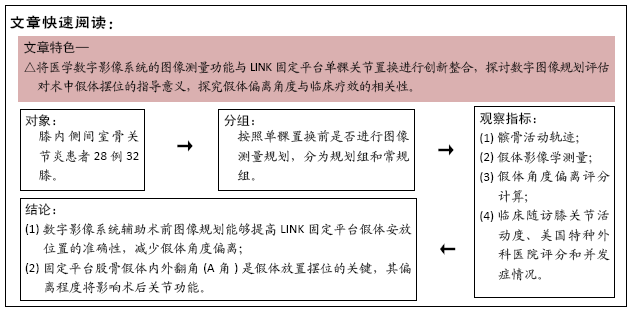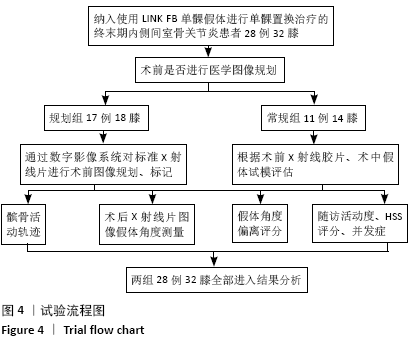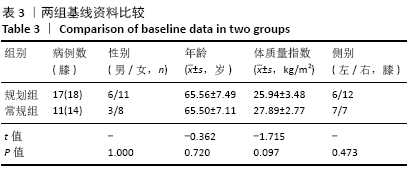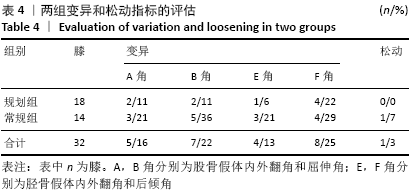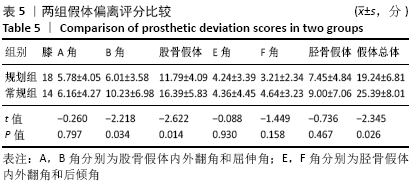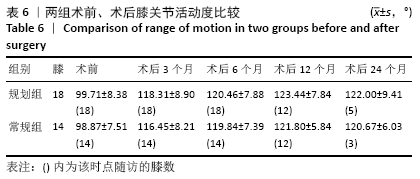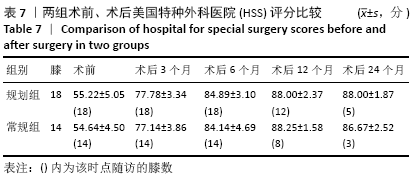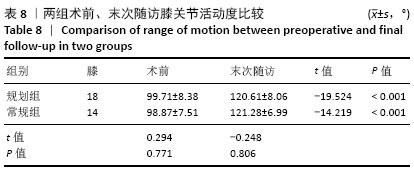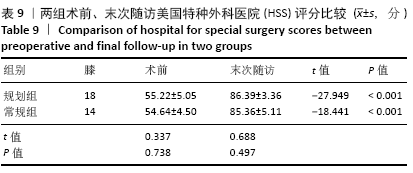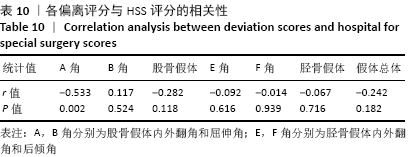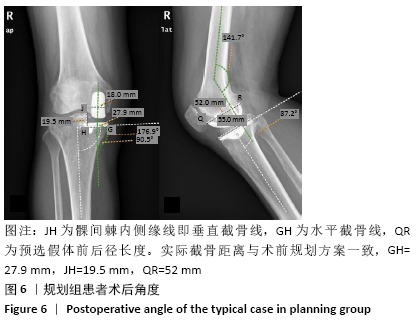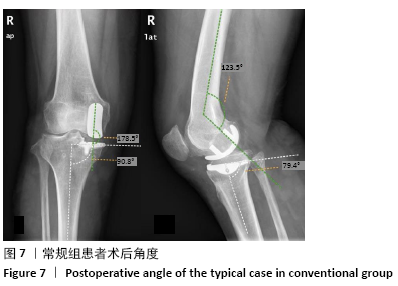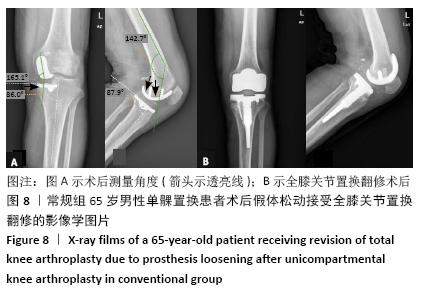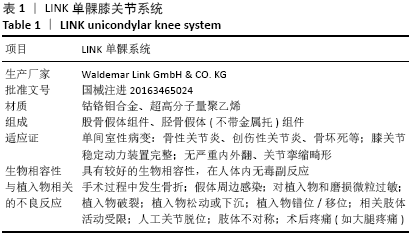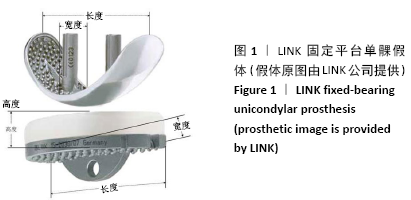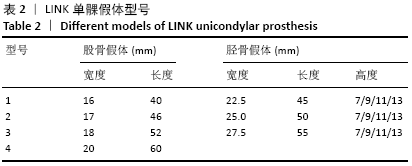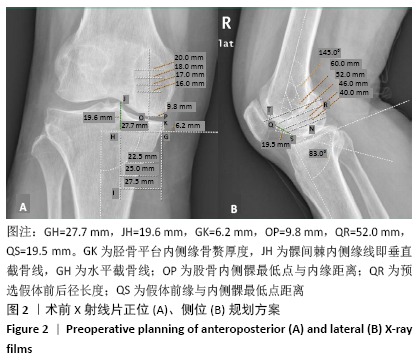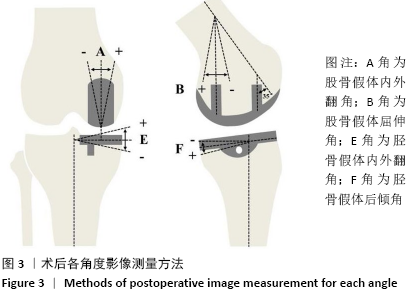[1] HANREICH C, MARTELANZ L, KOLLER U, et al. Sport and Physical Activity Following Primary Total Knee Arthroplasty: A Systematic Review and Meta-Analysis. J Arthroplasty. 2020;35(8):2274-2285.e1.
[2] SATKU K. Unicompartmental knee arthroplasty: is it a step in the right direction?--Surgical options for osteoarthritis of the knee. Singapore Med J. 2003;44(11):554-556.
[3] MOGHIMI N, RAHMANI K, DELPISHEH A, et al. Risk factors of knee osteoarthritis: A case-control study. Pak J Med Sci. 2019;35(3):636-640.
[4] 张英泽, 李存祥, 李冀东, 等. 不均匀沉降在膝关节退变及内翻过程中机制的研究[J]. 河北医科大学学报,2014,35(2):218-219.
[5] BANNURU RR, OSANI MC, VAYSBROT EE, et al. OARSI guidelines for the non-surgical management of knee, hip, and polyarticular osteoarthritis. Osteoarthrit Cartilage. 2019;27(11):1578-1589.
[6] 黄野. 胫骨高位截骨术治疗膝关节骨关节炎的现状[J]. 中华关节外科杂志(电子版),2016,10(5):470-473.
[7] CRAWFORD DA, BEREND KR, THIENPONT E. Unicompartmental Knee Arthroplasty: US and Global Perspectives. Orthop Clin North Am. 2020; 51(2):147-159.
[8] DI MARTINO A, BORDINI B, BARILE F, et al. Unicompartmental knee arthroplasty has higher revisions than total knee arthroplasty at long term follow-up: a registry study on 6453 prostheses. Knee Surg Sports Traumatol Arthrosc. 2020. doi: 10.1007/s00167-020-06184-1.
[9] KENNEDY JA, MOHAMMAD HR, YANG I, et al. Oxford domed lateral unicompartmental knee arthroplasty. Bone Joint J. 2020;102-b(8): 1033-1040.
[10] NIINIMAKI T, ESKELINEN A, MAKELA K, et al. Unicompartmental knee arthroplasty survivorship is lower than TKA survivorship: a 27-year Finnish registry study. Clin Orthop Relat Res. 2014;472(5):1496-1501.
[11] KANG KT, SON J, KOH YG, et al. Effect of femoral component position on biomechanical outcomes of unicompartmental knee arthroplasty. Knee. 2018;25(3):491-498.
[12] RIVIÈRE C, HARMAN C, LEONG A, et al. Kinematic alignment technique for medial OXFORD UKA: An in-silico study. Orthop Traumatol Surg Res. 2019;105(1):63-70.
[13] 赵东方, 孔祥朋, 王毅, 等. 第三代Oxford单髁假体安放位置对人工单髁关节置换术近期疗效的影响[J]. 中国修复重建外科杂志, 2018,32(12):1518-1523.
[14] KANG KT, SON J, BAEK C, et al. Femoral component alignment in unicompartmental knee arthroplasty leads to biomechanical change in contact stress and collateral ligament force in knee joint. Arch Orthop Trauma Surg. 2018;138(4):563-572.
[15] 肖靓琨, 李静文. X线、MRI在膝骨关节炎早期的诊断价值分析[J]. 风湿病与关节炎,2019,8(9):43-45.
[16] EDMONDSON MC, ISAAC D, WIJERATNA M, et al. Oxford unicompartmental knee arthroplasty: medial pain and functional outcome in the medium term. J Orthop Surg Res. 2011;6:52.
[17] EWALD FC. The Knee Society total knee arthroplasty roentgenographic evaluation and scoring system. Clin Orthop Relat Res. 1989;(248):9-12.
[18] MANNAN A, PILLING RWD, MASON K, et al. Excellent survival and outcomes with fixed-bearing medial UKA in young patients (≤ 60 years) at minimum 10-year follow-up. Knee Surg Sports Traumatol Arthrosc. 2020;28(12):3865-3870.
[19] TU Y, XUE H, MA T, et al. Superior femoral component alignment can be achieved with Oxford microplasty instrumentation after minimally invasive unicompartmental knee arthroplasty. Knee Sur Sports Traumatol Arthrosc. 2017;25(3):729-735.
[20] BUSH AN, ZIEMBA-DAVIS M, DECKARD ER, et al. An Experienced Surgeon Can Meet or Exceed Robotic Accuracy in Manual Unicompartmental Knee Arthroplasty. J Bone Joint Surg Am. 2019; 101(16):1479-1484.
[21] PARK KK, KOH YG, PARK KM, et al. Biomechanical effect with respect to the sagittal positioning of the femoral component in unicompartmental knee arthroplasty. Biomed Mater Eng. 2019;30(2):171-182.
[22] LU Y, ZHENG ZL, LV J, et al. Relationships between Morphological Changes of Lower Limbs and Gender During Medial Compartment Knee Osteoarthritis. Orthop Surg. 2019;11(5):835-844.
[23] CHENG CK, HUANG CH, LIAU JJ, et al. The influence of surgical malalignment on the contact pressures of fixed and mobile bearing knee prostheses--a biomechanical study. Clin Biomech. 2003;18(3): 231-236.
[24] PEGG EC, WALTER J, MELLON SJ, et al. Evaluation of factors affecting tibial bone strain after unicompartmental knee replacement. J Orthop Res. 2013;31(5):821-828.
[25] IESAKA K, TSUMURA H, SONODA H, et al. The effects of tibial component inclination on bone stress after unicompartmental knee arthroplasty. J Biomech. 2002;35(7):969-974.
[26] SANO M, OSHIMA Y, MURASE K, et al. Stress Analysis of the Proximal Tibia using Finite Element Method after Unicompartmental Knee Arthroplasty. J Nippon Med Sch. 2020;87(5):260-267.
[27] PEERSMAN G, TAYLAN O, VERHAEGEN J, et al. Does Unicondylar Knee Arthroplasty Affect Tibial Bone Strain? A Paired Cadaveric Comparison of Fixed- and Mobile-bearing Designs. Clin Orthop Relat Res. 2020; 478(9):1990-2000.
[28] ZHAO J, WU Z, YU Y, et al. Comparison of unicompartmental knee arthroplasty and total knee arthroplasty on joint function in elderly patients with knee osteoarthritis. Int J Clin Exp Med. 2019;12(2): 2072-2078.
[29] 刘江, 孙海宁, 王冰, 等. 固定平台内侧单髁膝关节置换的中短期疗效[J]. 中国矫形外科杂志,2019,27(16):1450-1454.
[30] CAO Z, NIU C, GONG C, et al. Comparison of Fixed-Bearing and Mobile-Bearing Unicompartmental Knee Arthroplasty: A Systematic Review and Meta-Analysis. J Arthroplasty. 2019;34(12):3114-3123.e3.
[31] OLIVER G, JALDIN L, CAMPRUBÍ E, et al. Observational Study of Total Knee Arthroplasty in Aseptic Revision Surgery: Clinical Results. Orthop Surg. 2020;12(1):177-183.
[32] KUIPERS BM, KOLLEN BJ, BOTS PC, et al. Factors associated with reduced early survival in the Oxford phase III medial unicompartment knee replacement. Knee. 2010;17(1):48-52.
[33] 郭万首. 单髁关节置换术影像学评价[J]. 中华关节外科杂志(电子版),2015,9(5):640-643.
[34] 杨涛, 涂意辉, 薛华明, 等. 单髁关节置换术股骨髓内定位对股骨假体力线影响的影像学研究[J]. 中国修复重建外科杂志,2019, 33(1):8-12.
[35] CITAK M, DERSCH K, KAMATH AF, et al. Common causes of failed unicompartmental knee arthroplasty: a single-centre analysis of four hundred and seventy one cases. Int Orthop. 2014;38(5):961-965.
[36] ETTINGER M, ZOCH JM, BECHER C, et al. In vitro kinematics of fixed versus mobile bearing in unicondylar knee arthroplasty. Arch Orthop Trauma Surg. 2015;135(6):871-877.
[37] ASHRAF T, NEWMAN JH, DESAI VV, et al. Polyethylene wear in a non-congruous unicompartmental knee replacement: a retrieval analysis. Knee. 2004;11(3):177-181.
|
